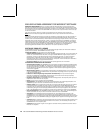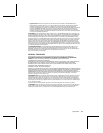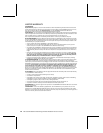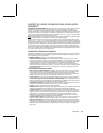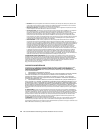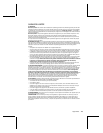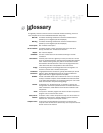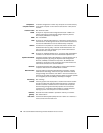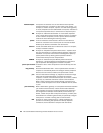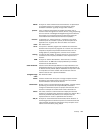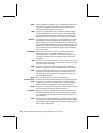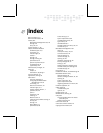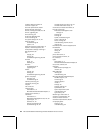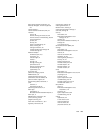
78 Microsoft Broadband Networking Wireless Notebook Kit User’s Guide
computer-to- A network configuration in which any computer can connect directly
computer network to any other computer on the network. Contrast with “client/server
network.”
crossover cable See “Ethernet cable.”
DHCP Acronym for “Dynamic Host Configuration Protocol.” DHCP is an
Internet protocol that automatically assigns temporary Internet
Protocol (IP) addresses to computers.
DMZ See “virtual DMZ.”
DNS Acronym for “Domain Name System.” A data query service used on
the Internet for translating host names, such as www.microsoft.com,
into Internet addresses that can be understood by computers.
domain A collection of computers on a network that share a common user
database and security policy. A domain is administered as a unit
with common rules and procedures by the domain administrator.
Each domain has a unique name.
DSL Acronym for “Digital Subscriber Line.” A constant, high-speed digital
connection to the Internet that uses a dedicated telephone line.
dynamic IP address A dynamic Internet Protocol (IP) address is a unique identifier that is
assigned temporarily (by using the Dynamic Host Configuration
Protocol, or DHCP) to a device that requires it. IP addresses are
required for computers to find one another and communicate over
the Internet. Contrast with “static IP address.”
Ethernet A networking standard that uses cables to transmit data between
computers. Also known as the IEEE 802.3 standard.
Ethernet cable A type of cable that transmits data between computers. A widely
used network technology. There are two types of Ethernet cables,
straight-through and crossover, that differ in how the connectors on
each end of the cable are wired. Ethernet cables can support speeds
of 10 megabits per second (Mbps), 100 Mbps, and higher.
file sharing See “sharing.”
firewall A security system that helps protect a network from hacker attacks
and other threats that originate outside the network. A hardware
firewall is a device at the entrance to a network that has specific
data-checking settings and that helps protect all of the devices
connected to it. A software firewall resides on a single computer,
helping to protect that computer from external threats.
firmware Software information loaded in permanent memory on a device.
gateway See “base station.”
host name The Domain Name System (DNS) name of a device on a network, a
name such as www.microsoft.com.



